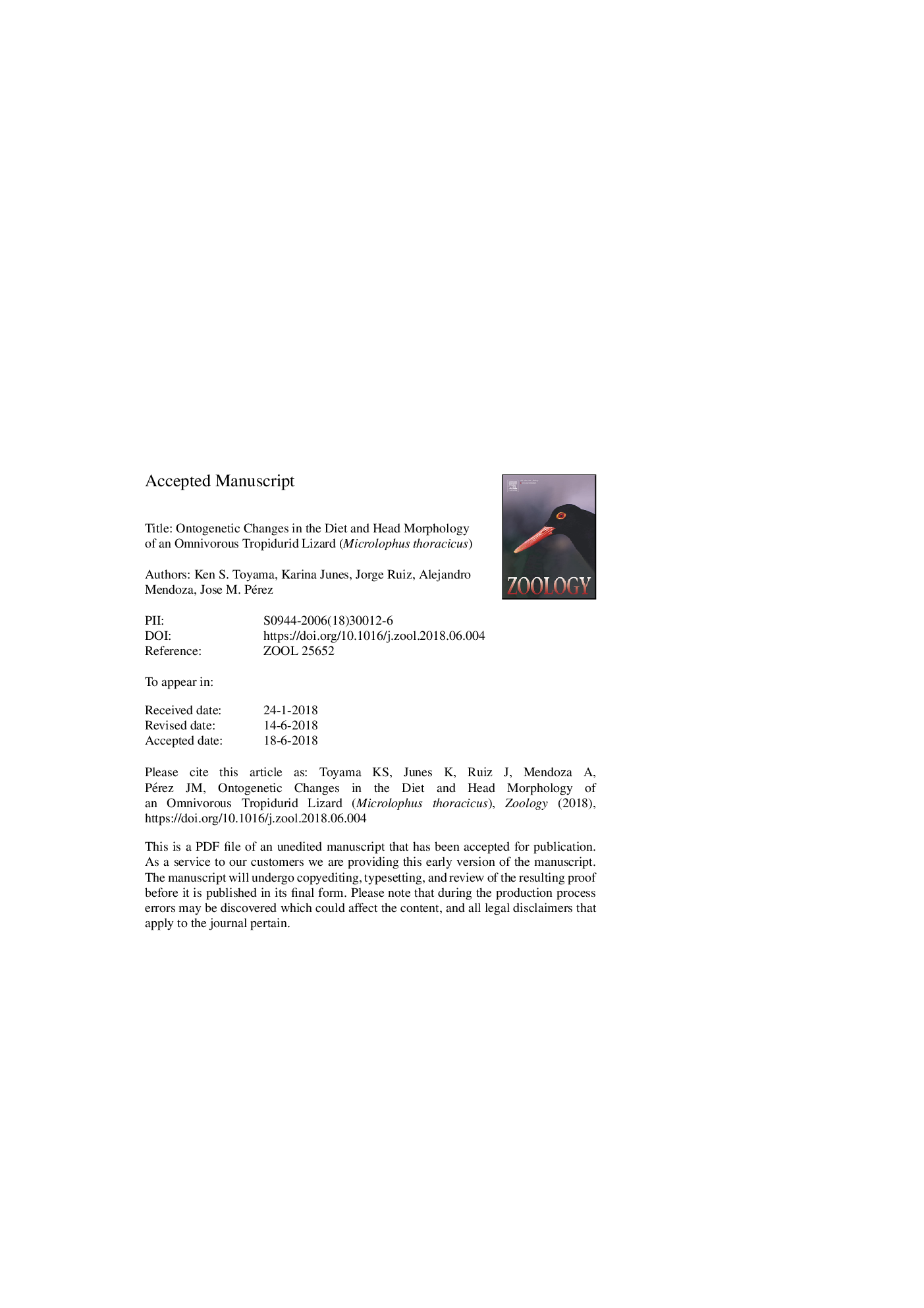| Article ID | Journal | Published Year | Pages | File Type |
|---|---|---|---|---|
| 8626927 | Zoology | 2018 | 39 Pages |
Abstract
Ontogenetic shifts from an insectivorous diet towards an herbivorous one are well known in lizards. Energetic, behavioral and morphological factors have been linked to this pattern, but the latter have received less attention, especially with respect to head morphology. It is known that robust heads are related to stronger bite forces, consequently facilitating the consumption of harder or tougher, more fibrous items such as plants. In this study the ontogeny of diet and head morphology of the omnivorous tropidurid lizard Microlophus thoracicus are described. We found a significant ontogenetic shift from a mainly insectivorous diet in juveniles to a mainly herbivorous one in adults. In parallel, we measured the length, height and width of the head of the studied individuals. We found that adult individuals showed proportionally taller and wider heads when compared to juveniles, and that these increases in proportional head dimensions were significantly correlated with the increase in plant material in the diet that we observed. Additionally, we compared the morphologies of adults and juveniles of M. thoracicus and two other Microlophus species known to be insectivorous. These comparisons showed that M. thoracicus adults have proportionally more robust heads when compared to their insectivorous congeners, which is in agreement with the hypothesized link between head morphology and diet characteristics. The results of this study suggest that the known relationship between herbivory and head morphology is maintained even in an ontogenetic context, but further study is needed to determine the effect of other selective pressures which influence these changes in morphology.
Related Topics
Life Sciences
Agricultural and Biological Sciences
Animal Science and Zoology
Authors
Ken S. Toyama, Karina Junes, Jorge Ruiz, Alejandro Mendoza, Jose M. Pérez,
